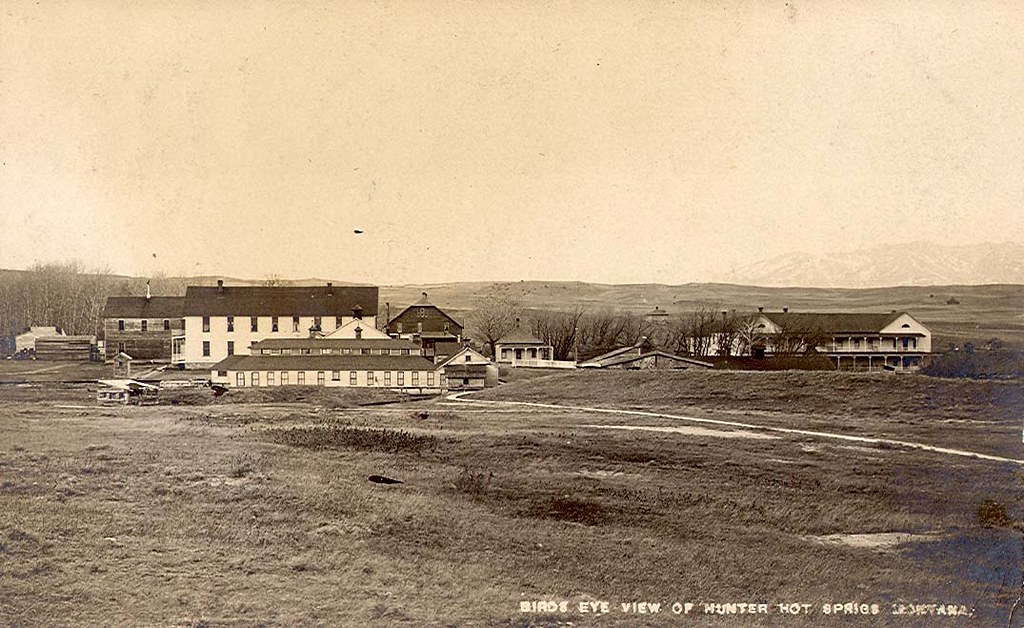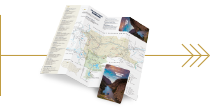Notes From the Road: Hunter’s Hot Springs: Ghosts of Hot Springs Past

I’m not sure I actually knew how much of a “thing” the hot springs were to Montana’s Yellowstone Country residents until I actually moved here. It seemed like every night of the week (especially in the winter), someone was trying to get me to go soaking (and at a cheap $5 per soak, it’s hard to say no, primarily when it’s below zero out).
But what I didn’t know was how much the hot springs trend was capitalized upon by the first settlers of Yellowstone Country. It seems there used to be a veritable treasure trove of hot springs all around this part of the country that savvy settlers found, purchased the land atop of, and turned a profit from patrons who flocked to the waters for their “healing” qualities.
Today, many of the hot springs are still in use, but there are also those that fell into disrepair or obscurity. One such hot spring resort was Hunter’s Hot Springs, located about 19 miles east of Livingston, in relative proximity to the town of Big Timber.
Dr. AJ Hunter (who creatively named the hot springs after himself) found the natural hot springs pool after camping near Big Timber on his way to Virginia City to mine gold. Hunter quickly laid claim to the hot springs and continued west, presuming he’d be back to develop them.
In 1869, after he struck out in the gold-mining industry, Hunter went back to his hot springs, built a log cabin near them and dammed the hot creek that flowed, creating a natural hot springs pool. Hunter’s first clients were the native Crow Indian tribe members that coincidentally used the hot springs prior to when Hunter laid claim to them. At one time, it was noted that as many as 1,000 teepees were set up around Hunter Hot Springs, with various members of the Crow tribe attempting to heal their maladies in the hot springs.
After running the hot springs for nearly 20 years, during which time Hunter himself improved the bathing facilities and built a two-story hotel for overnight guests, the Hunter family decided to sell the property to James A. Murray, of Butte, in 1889. Murray saw the huge potential of Hunter Hot Springs (as they were on one of the only direct roads to Yellowstone National Park and, therefore, a huge draw for tourists making extended journeys to the area). Murray conceived and began building a massive hotel on the site, which opened in 1909, and was known as the Hotel Dakota, which could house nearly 300 people.
Hotel Dakota became an icon of status and hosted many businessmen, sportsmen and influential men and women of the early 20th century. The hot springs area was complete with a massive pool, above which hung diving towers, rope swings and platforms off which guests could dive into the pool. There was a “sweat arena” where guests could wrap in towels and release bodily impurities. There was even a very famous hotel bar that many socialites would congregate at during their extended vacations at the Hotel Dakota. There was a mineral water bottling plant built to bottle the healing properties of the hot springs and ship it all over the region. Life at the Hotel Dakota was good and getting better every day.
However, the Hotel Dakota, like so many other iconic buildings of that era, was not meant to last. It fell pray to the rise of automobile interstate travel, as the state of Montana constructed a new road parallel to where I-90 currently sits, to efficiently move travelers across the state. Prohibition closed down their famous bar and fewer people came with each passing year.
The Hotel Dakota enjoyed 20 years of splendor, becoming one of the most iconic locations in Yellowstone Country. However, in 1932, a fire destroyed the entire hotel, save for the solarium and the pool area. With no lodging area, Hunter Hot Springs became a public hot pool and was run until the mid-1970s. After sitting untouched for nearly 20 years as a silent reminder of a great era gone past, the entire resort was razed and the hot springs capped.
Today, the only thing that remains of Hunter Hot Springs are the capped springs, which are difficult to find, but can sometimes be seen at the base of a trail of steam that has escaped from the caps. To locate Hunter Hot Springs today and see if you can envision an enormous hotel on its site, head to the town of Springdale, off of I-90, and stop to ask about Hunter Hot Springs. We’ll bet our money that they’ll at least have a story to tell you, along with good directions.


